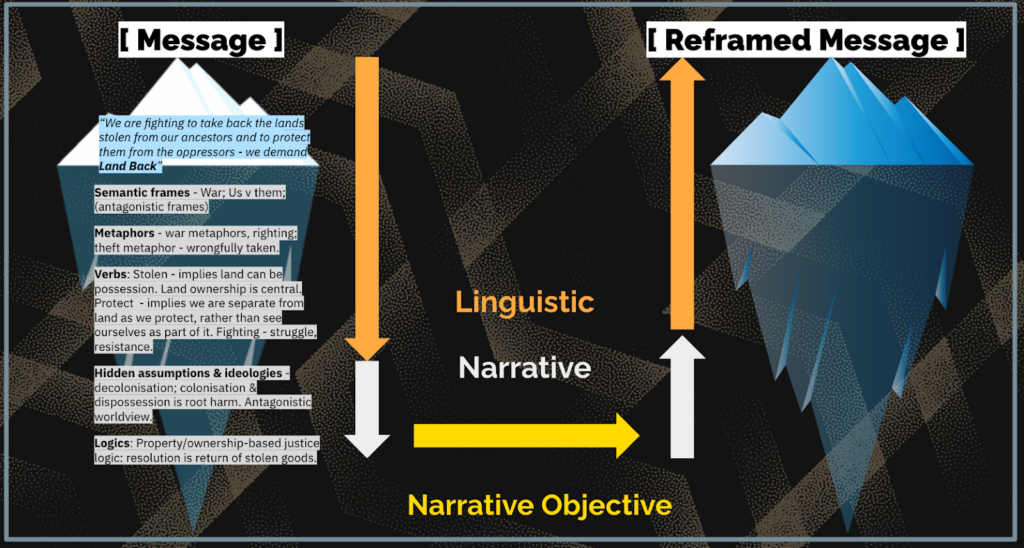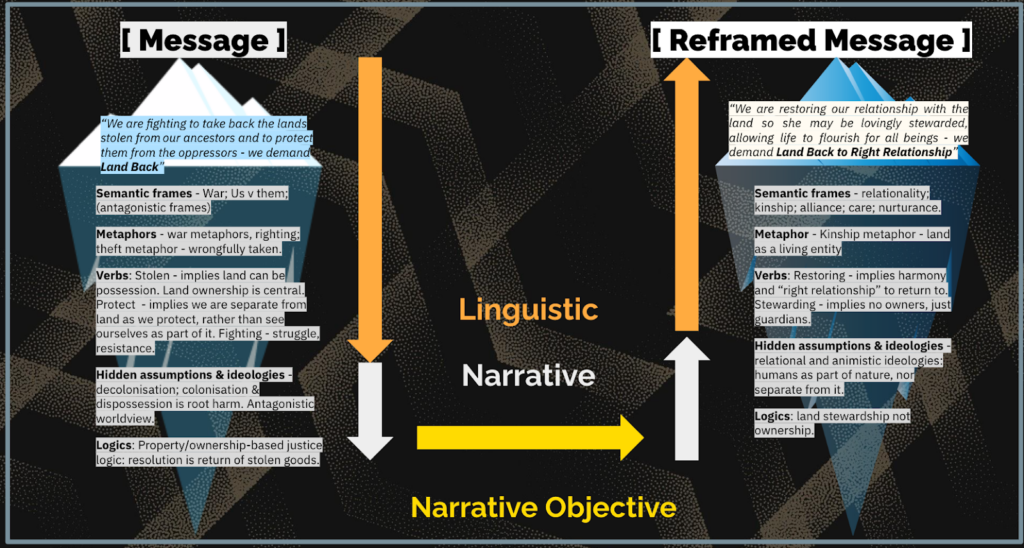Decode & Recode
You will first select a representative message of the target narrative community you wish to evolve. You will then Decode this message. Finally, you will Recode the message – which will be the basis of your hack.
A simple way to guide you through this Decode → Recode process is to use the metaphor of an iceberg.
Narratives are like icebergs, there is a visible part above the surface and a hidden part, under the water:
- 1) The part that is visible are the messages and communications that are the actions and expressions of the narrative.
- 2) The hidden section of the iceberg, represents the deeper layers of the narrative (the frames, metaphors, hidden assumptions, ideologies, logics, etc).
Frames integrate all the other levels of the narrative into one coherent ‘view’, giving meaning to experience.
Metaphors compare two ideas to create a third in our minds, they play with the imagination and vital impulses.
Verbs reveal actions, processes, and relations the narrative encodes – showing us who has agency, what is happening, and how power or responsibility is being described.
Hidden Assumptions describe what is not explicit but can be deduced, what is not visible but is behind the message, the subliminal.
Ideology is the cultural context and the ‘justification for action’ that is held by society. Ideological structures, such as cultures and belief systems place the concepts within larger meaning frameworks. Logic are truths that we assume and do not question underlying our belief systems.
STEP 1: You will decode the narrative, looking for verbs used, subject/object relationships, evoked images & conceptual metaphors, and semantic frames, hidden assumptions and ideologies.
Here is an example:

STEP 2: You will recode the narrative, developing new conceptual metaphors, semantic frames and logics; and ensuring verb choice and active subjects/objects align with your worldview.
Look at the worksheet for a step by step guide.
Here is an example:

The recoded message still contains a justice lens because it addresses the harm of dispossession and the need to restore balance — but instead of grounding justice in property rights (“taking back”), it grounds it in Right Relationship. This introduces an ontological shift: land is not framed as an object to be owned, fought over, or protected from a distance, but as a living relative with whom we are in ongoing relationship.
Worksheet – Decode Iceberg (basic)
Worksheet – Recode Iceberg (basic)